|
Taras Hryhorovych Shevchenko is a famous poet and novelist, an outstanding representative of the epistolary genre. He also became famous for his philosophical views - his enlightening contribution to the history of our culture is priceless. In addition, Kobzar is one of the greatest domestic painters, illustrators and engravers. Even now, Ukrainian artists cannot fully reproduce his unique style and variety of applied techniques. The works of the great master are deservedly compared to the canvases of Rembrandt, and in the unique manner of writing, they find similarities with Paul Gauguin, Eugene Delacroix and Vincent van Gogh. Our article and information on ukrburshtyn.com will introduce you to the most famous works, the history of their creation and symbolism!
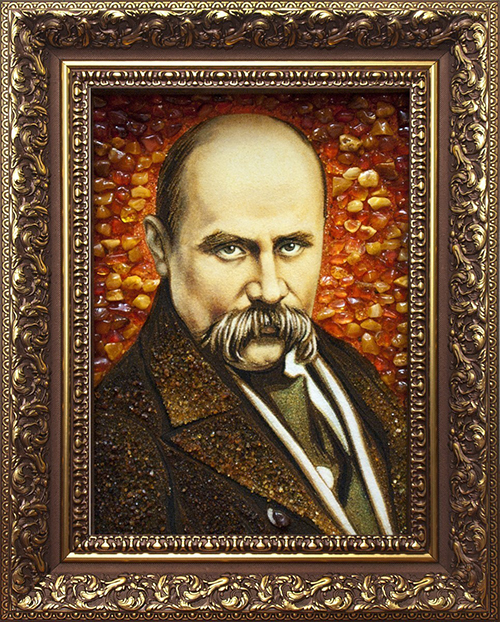
Picture and word - how talent developed
Although Shevchenko the poet is much more famous than Shevchenko the artist, his first steps in art were drawings. Most historians and researchers agree with this - while Taras Hryhorovych's earliest literary works date back to 1837, he began to create mature, elaborate paintings as early as 1830. It was the painter's extraordinary talent that helped him free himself from serfdom. How did it happen?

The future Kobzar started drawing in early childhood, using pieces of chalk and charcoal. Noticing his abilities, in 1832 the landowner sent Shevchenko to study with one of the most popular artists of that time - V. Shiryaev. In St. Petersburg, the apprentice remembered the wonderful panoramas of the Summer Garden, unique sculptures and architectural ensembles. There he met other artists - I. Soshenko, K. Bryullov, V. Grigoryovych, V. Zhukovsky and O. Venetsianov. Later, they bought the young man by paying 2,500 rubles. In those days, this was a huge amount, equal to almost 45 kg of silver!
After his release, Taras Hryhorovych entered the Academy of Arts. His remarkable abilities were noted by both fellow students and teachers. In particular, the young man was awarded a silver medal three times, and then a gold medal.
After completing his studies, the painter received a position in the Kyiv Archeographic Commission, where he worked from 1845 to 1847. The preserved paintings of T. Shevchenko, painted during this period, are mainly dedicated to the central Ukrainian and Volyn monuments of antiquity. He also created portraits, story canvases, many illustrations for various literary works. Among the latter, the drawing for Pushkin's poem "Maria" stands out. It depicts the daughter of Poltava Chief Judge Motrya Kochubei, who was Ivan Mazepa's lover.

In addition, Taras Hryhorovych Shevchenko is the founder of the household genre in Ukrainian painting. His canvases are distinguished by a successful composition and saturated colors, and the characters are spiritual, believable and natural.
Kobzar's creative achievements are simply amazing. Drawing was not just a pleasant activity for him - it became a means of expressing his feelings and desires during the period of serfdom and exile. From 1830 to 1861, Shevchenko created more than 1,000 works. Unfortunately, about 300 of them have been lost, so now only 835 works, including sketches and sketches, are preserved in museums and private collections.
Taras Hryhorovych was equally good at watercolor and oil paints, sepia, ink, pencil, technical techniques of etching, drawing and painting. It was he who became the first representative of critical realism in the history of Ukraine. The subjects of the artist's works are equally diverse - he memorized everyday scenes and mythological subjects, landscapes and portraits, architectural objects and still lifes.
Female images on the canvases of T. G. Shevchenko
The dramatic deprivations experienced by a girl in love is one of the most acute and controversial issues in art. It was reflected in the works of the great Kobzar, who always sympathized with the tragic fate of women in the conditions of serfdom and the rule of the Russian Empire. And one of his most famous works is Shevchenko's painting "Catherine", created in 1842 based on the poem of the same name. However, the image has a deeper interpretation - in it the painter showed the suffering of an enslaved people deprived of their own state, independence and even language.
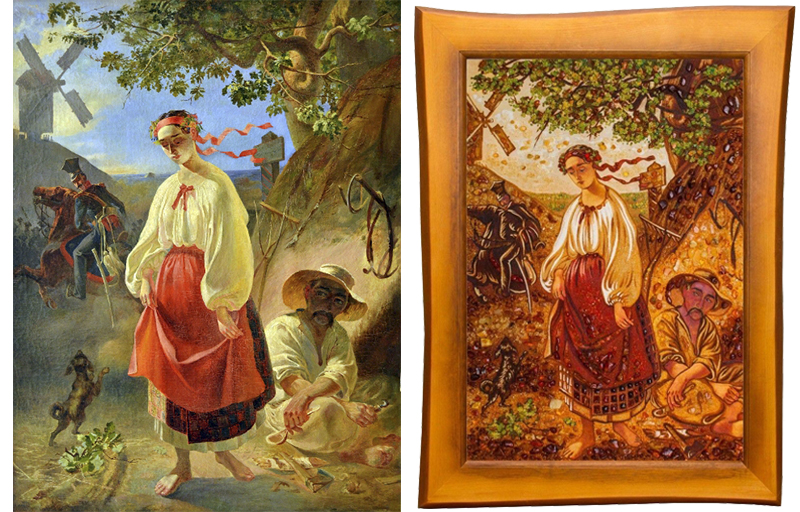
The canvas of the great master is very symbolic. A despondent, sad girl with a bowed head, dressed in ethnic embroidered clothes - the embodiment of an oppressed country, the enslaved state of most Ukrainians, their difficult and troubled fate. A horseman dressed in a soldier's uniform is a prototype of the monarchy, which spreads its power over the conquered lands. But there is hope for a future revival - according to some researchers, it is represented by the peasant in white linen robes, depicted in the lower right corner. According to the letter of Shevchenko himself, sent in 1843 to his friend S. Tarnovsky, this is "Katherina's grandfather, who sits in the Tsarina under the chimney."
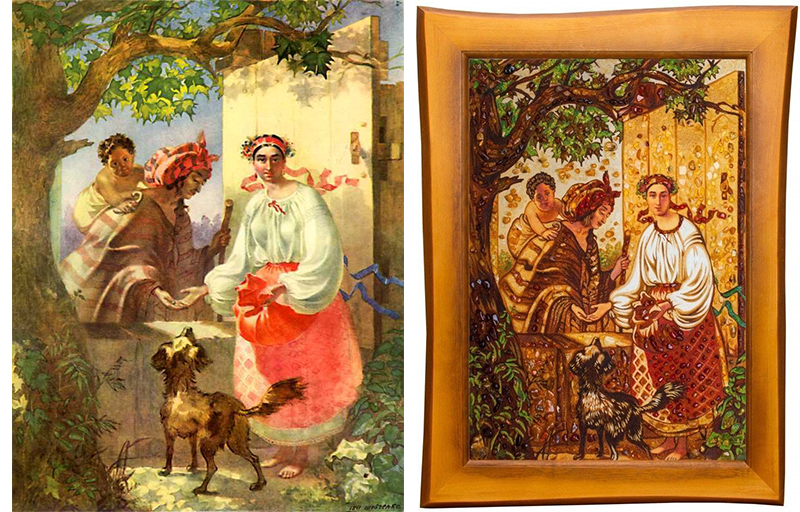
The manner in which the picture was executed is very unusual for that time. The artist deviates from academic canons, being guided more by impressionist traditions. He uses fresh, bright tones, creating a dynamic, sensual and attractive composition. It looks like the model is about to move! You can assess for yourself how lively and realistic this canvas looks by purchasing unique amber paintings based on its motifs.
The same features can be traced in other works of Taras Hryhorovych Shevchenko, where women are shown - "Portrait of Kateryna Abaza" (1837), "Odalisque" (1840), "Portrait of T. O. Mayevska" (1843), "In the Harem" (1843 ) etc.
History, culture, everyday life - Ukrainian etchings
The lifelong dream of the brilliant artist was to create a cycle of works depicting his native country. In a letter to a friend, he described his plans as follows: "... I want to paint our Ukraine...". The master planned the publication of three albums - the first would contain picturesque landscapes and panoramas of famous architectural structures, the second - scenes of life and everyday life, and the third - illustrations of historical events. Unfortunately, these plans never materialized - in 1847, T. G. Shevchenko was arrested as a member of the Cyril-Methodiev Brotherhood.
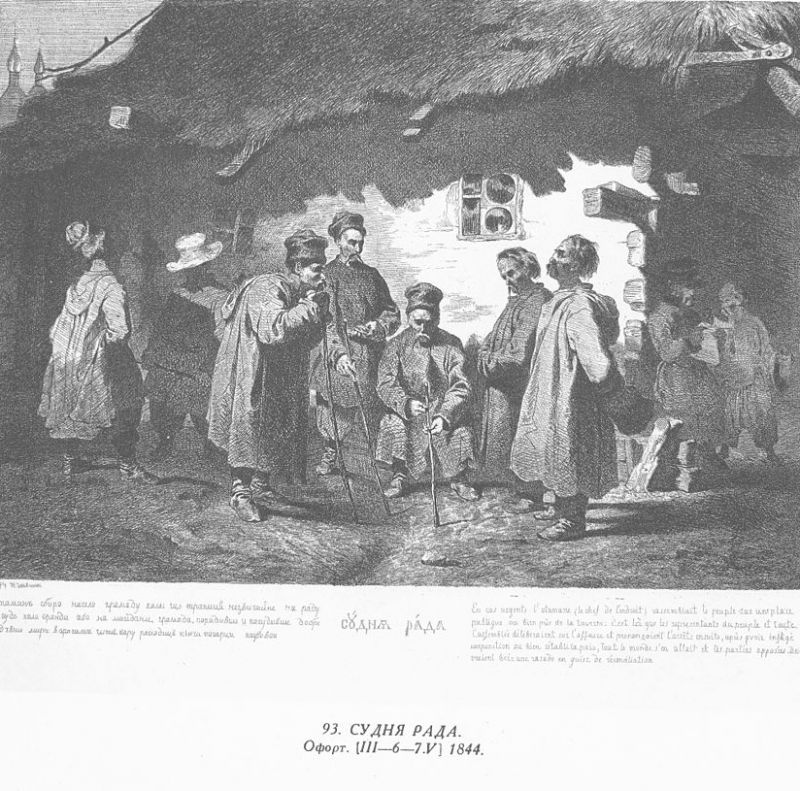
He managed to show the world only a small part of his creations. So, in 1844, a collection was published, which included 6 etchings - "Fairy Tale", "In Kyiv", "Old Men", "Vydubytskyi Monastery", "Judgement Council" and "Gifts in Chigyrin 1649". But even these works aroused the admiration of the public - with talented performance, worked out details, romantic and at the same time realistic manner. The master showed in prints the country so dear to his heart - quiet landscapes, where thin willows lean over the crystal clear waters of the Dnieper, historical events that became the basis for the formation of Ukrainians as a nation, expressive and recognizable faces of peasants, travelers and Cossacks.
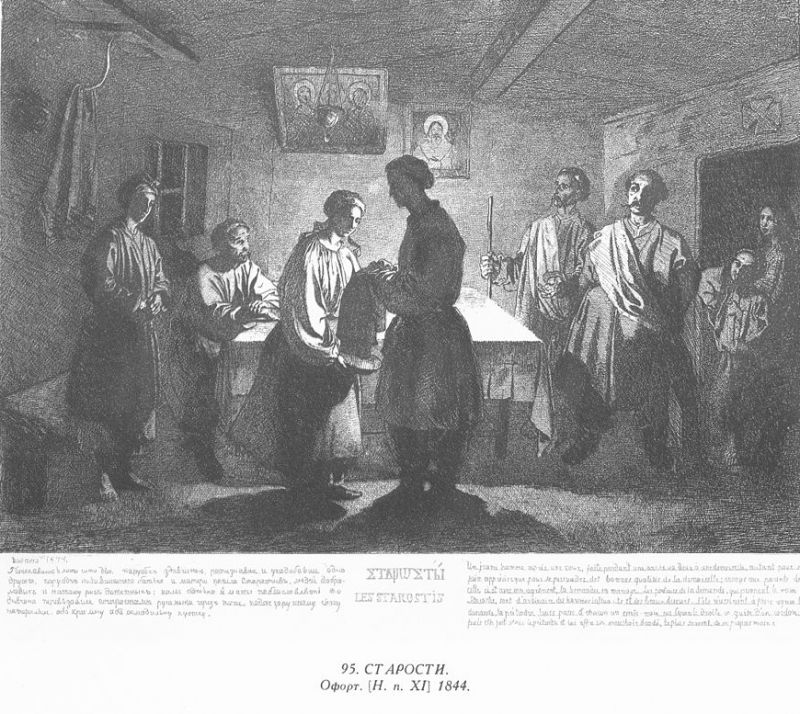
It is interesting that Kobzar did not study the engraving technique at the Academy of Arts, mastering it on his own. And he succeeded brilliantly - some of the master's works surpassed even the famous works of Albrecht Dürer and Francisco Goya! Taras Shevchenko's paintings are distinguished by a combination of etching and aquatint techniques, plastic modeling of light and shadow, skillful hatching, as well as acute social themes - such as "Alone in her household" or "Naturnytsia".
The travels of the poet - creativity in exile
The geography of Taras Hryhorovych's works is not limited to Ukraine. His works include many landscapes of Russia and Kazakhstan, where he was in exile - first as a private in the Orenburg Fort, and later as an artist of the Aral Expedition. Sketches of nature are realistic, but at the same time imbued with lyricism and subtle sadness. This mood is especially vividly manifested in the paintings where the Aral landscapes are recorded - "Fire in the Steppe" (1848), "Fort Kara-Butak" (1848-1849), "Jhangis-Agach" (1848), "Dustan's Grave" (1848- 1850).
Later, Shevchenko was sent to the Novopetrov coastal fort on Mangyshlak Island, where he spent the next 7 years. At this time, he creates another series of works where harsh views appear filled with light and warmth. Among the most famous paintings of this period are "View of the Aktau Mountains from the Agaspeyar Valley", "Akmysh-Tau" (1851), "Moonlit Night among the Mountains" (1851-1857).
The cycle of landscapes "Mangyshlak Trees" (1851-1859) stands out among others - sketches of plants struggling for life in an arid climate. Researchers consider them to be prototypes of those people whom the artist met in his travels - broken and despairing or proud and steadfast.
People and faces - portraits created by T. G. Shevchenko
Kobzar had a remarkable ability to notice the character, mood and psychological features of people he saw for the first time. He transferred to the canvas not only the appearance, but also the individuality and feelings of each person. That is why the portraits made by him allow you to imagine the character and temperament of the models.
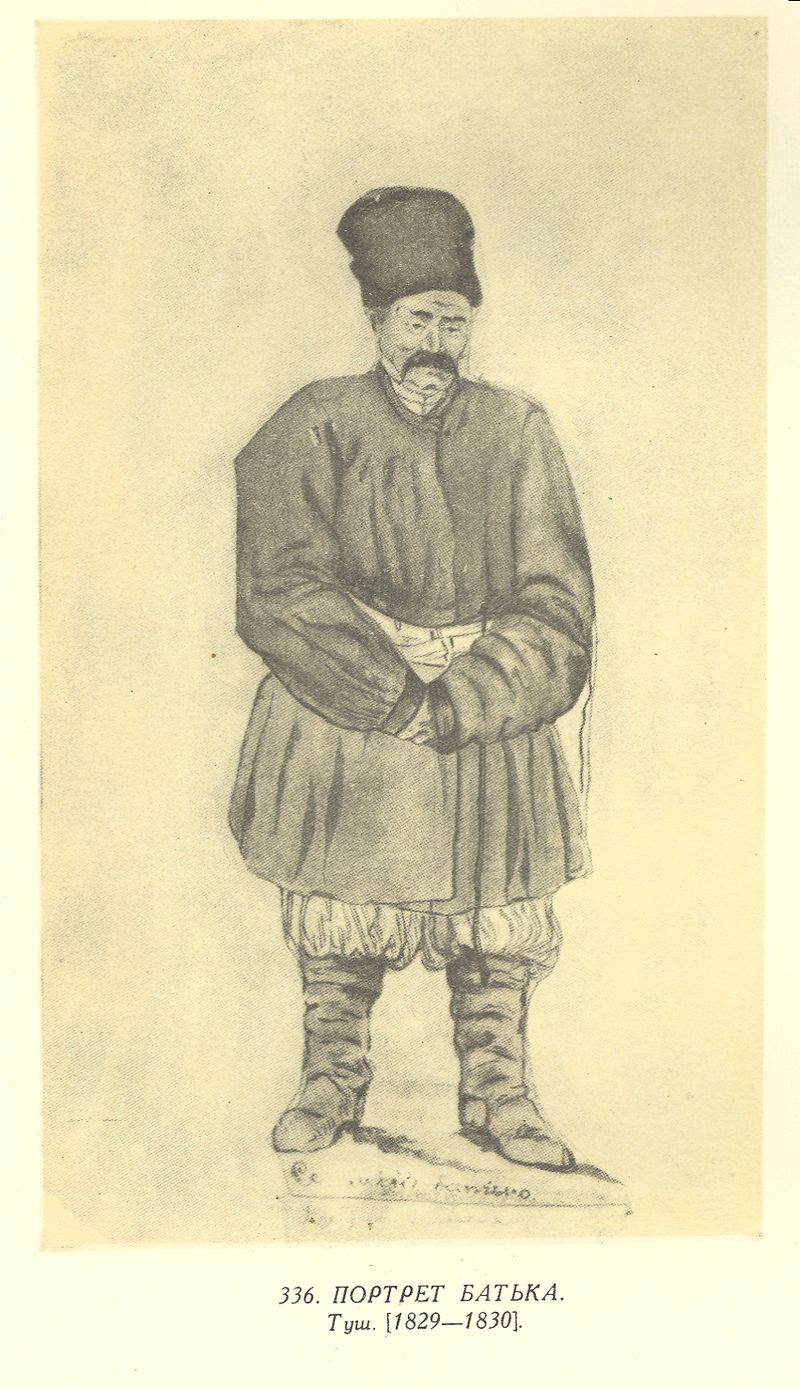
The first surviving portrait painted by T. G. Shevchenko is "Portrait of Father" (approximately 1829-1830), and his last work on this subject is "Self-Portrait" (1861). During this period, the master created more than 150 canvases, including about 50 self-portraits. Only Rembrandt and Vincent van Gogh painted so many pictures. These drawings show the viewer a vivid and dramatic story of Kobzar's growing up. Full of enthusiasm and creative plans, the look of a young man turns into a measured and doubtful look of an adult man - and he is replaced by an aged and tired gray-haired man, in whose eyes there is sadness, longing and pain.
But Taras Hryhorovych did not limit himself to self-portraits. He made significant improvements to the genre, capturing the model en plein air for the first time in domestic portrait painting. This work is known as "Portrait of O. Kotzeb" (1843).
A special place among the works of the great artist is occupied by sketches and sketches written in sepia. Among them is the image of the Cossack Katya (1856-1857). An attractive woman in national clothes lights a candle, covering the flame with her palm. The unusual composition immediately catches the eye, and the diffused light gives the picture romance, mystery and charm, emphasizes the beautiful and exotic features of the model's face. It was this canvas that caused T. G. Shevchenko to be compared with Rembrandt - the same exquisite and delicate chiaroscuro pattern can be traced in the works of the Dutch painter.
And our online store "Amber Polissya" will help you buy an amber painting based on the best works of the genius. The panels filled with precious stones and gem crumb find a new reading, colorful color, depth and volume. Therefore, they will be a great gift for everyone who appreciates Ukrainian history and culture, as well as a great addition to the interior.
|
|
 South Berwick Strawberry Festival.........always the last Saturday in June!
South Berwick Strawberry Festival.........always the last Saturday in June!